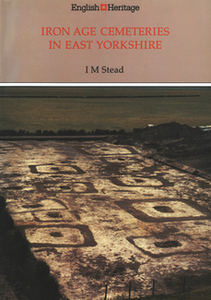English Heritage Archaeological Monographs
English Heritage, 2014. https://doi.org/10.5284/1028203. How to cite using this DOI
Data copyright © English Heritage unless otherwise stated
This work is licensed under the ADS Terms of Use and Access.
Primary contact
Historic England
The Engine House
Firefly Avenue
Swindon
SN2 2EH
Resource identifiers
- ADS Collection: 1416
- DOI:https://doi.org/10.5284/1028203
- How to cite using this DOI
Iron Age Cemeteries in East Yorkshire
Stead, I.
English Heritage (1991)
Abstract:

The La Tene 'Arras Culture' in East Yorkshire is best known for its burials, including cart-burials, most of which were in barrows defined by square-plan ditches. Many of these were excavated in the nineteenth century, and it was not until the record was augmented by air photography in the 1960s that more cemeteries became known and available for excavation. This book records the excavation of 267 burials, including two cart-burials. Two different types of burial are distinguished: crouched, orientated north-south, and extended, orientated east-west. The range of grave-goods with the different types of burial varied also: brooches and sheep bones were common with the crouched burials, while swords, spearheads, tools, and pig bones characterised the extended burials. Several of the corpses had been speared as part of the burial ritual. The two cart-burials included a more varied range of artefacts, including decorated metalwork and the most complete example of a mail tunic from the entire Celtic world. They also provided a great deal of information about Iron Age carts and provoked a reconsideration of their reconstruction. Descriptions and catalogues of the grave-goods are augmented by full environmental reports on the human and animal bones, the textiles, the molluscan, pollen, and soil evidence, and the geophysical prospecting. Scientific and dating evidence is included, together with a preliminary statistical survey of the human bones.
Download monograph
| Iron Age Cemeteries in East Yorkshire, Stead, I., English Heritage (1991), ISBN: 9781848021662 | 49 Mb |





